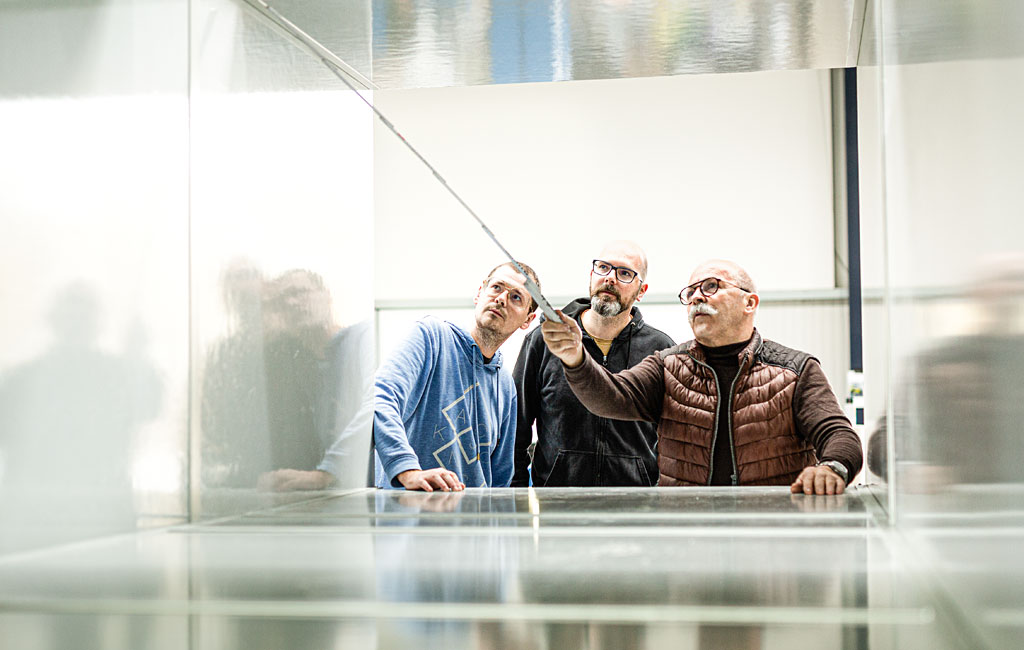A swimming pool and pigsty are more similar than you might think – at least when it comes to ventilation requirements. Although the air might smell considerably stronger in the sty, there is also a high humidity level there. At the Celle Ringhotel, the task of removing this humid air was carried out by an old system equipped with AC fans until March 2019.
Retrofitting to reduce costs

Love for the details: production manager Holger Bohlmann ensures the best quality with the final steps. (Photo: Ricardo Wiesinger | Fotogloria)
The system, which had become outdated, was resulting in operating costs of around 12,250 euros per year. This encouraged the hotel operators to think about installing a more modern and energy-efficient system. The inquiry led them to hdt Anlagenbau GmbH in Diepholz. Word had got around about the expertise of company manager Heinrich Dönselmann-Theile and his sons in all matters ventilation.
“We carry out 20 projects each year and tailor everything to fit the design of the air duct on site,” says Christopher Dönselmann-Theile. “And what makes us special is that we make the housings of our systems out of glass-fiber reinforced plastic panels that resist corrosion.” This is a major advantage when installed in a swimming pool, where the air is humid and contains chlorine, affecting metal components over time.
Installation with obstacles
On an initial inspection, the experts visited the site to get a first impression of the system. It quickly became clear that access to the ventilation system was very tight. Therefore, hdt quickly produced a 3D image of the aisles and the old system to determine the best way to carry out the retrofit. The result: the decision was made to supply the new system in two parts and to install them together on site. After a three-month planning phase, the installation began.
This came to fruition within two weeks. The old system was dismantled and the new one was installed. It was not necessary to touch the eight ventilation ducts on site. Instead, hdt designed the new system in such a way that necessary adjustments to the individual components of the system could be made in domestic production before installation. It consists of a supply air filter, a supply air fan, a heating register, a heat exchanger module, and an exhaust fan. Both RadiCal fans are manufactured by ebm-papst and each offer a continuously adjustable power output of 0.14 to 0.79 kW.
Efficiency is everything
The new system is much more energy-efficient, and therefore cheaper, than the old one. “Admittedly, it is slightly less efficient at heat recovery, but it is more efficient at ventilation, which makes up for it,” says Christopher Dönselmann. The operating costs following the retrofit speak volumes: they were cut to around 4,800 euros, i.e., by almost two thirds. To achieve this impressive result, hdt made use of the dryness of the outside air.
“With a swimming pool, it’s about dehumidifying the air,” says Christopher. “If you can do this using an air conditioner that heats the air, you very quickly reach an output of 10 to 20 kW.” To do it more efficiently, a different approach is needed. “The outside air that we bring into the pool reduces the humidity inside. We simply ventilate and bring back the energy that we would lose, using heat recovery. Another benefit is that fresh air is always coming into the system,” explains Christopher. On a final note, he says that a key feature of this kind of system is that it does not require maintenance: “You take a look at it every two years and it’s still going.”



Leave a comment